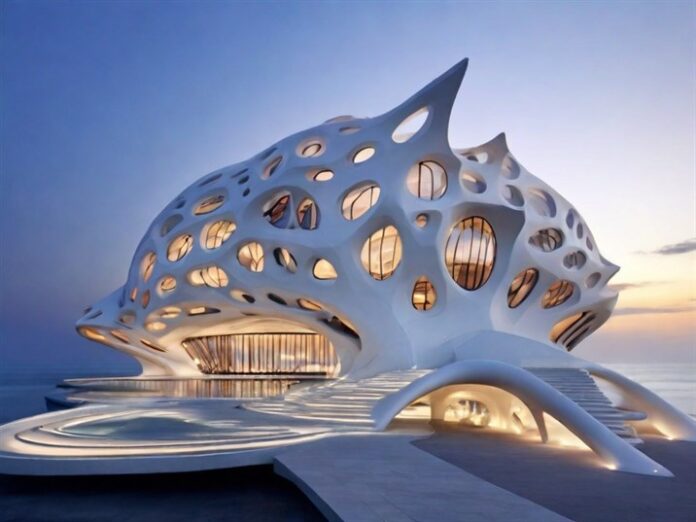Architecture is more than just buildings; it’s a testament to human creativity, ingenuity, and innovation. From ancient wonders to modern marvels, the world is adorned with breathtaking structures that captivate the imagination and inspire awe. In this article, we’ll explore 16 truly extraordinary architectural feats that you simply must see to believe. Prepare to be amazed as we journey through history and across the globe to discover these remarkable creations.
In This Article
- 1 Architectural Wonders: 16 Mind-Blowing Structures You Have to See for Yourself
- 2 The Great Pyramid of Giza, Egypt
- 3 The Taj Mahal, India
- 4 The Great Wall of China
- 5 The Colosseum, Italy
- 6 The Eiffel Tower, France
- 7 The Sydney Opera House, Australia
- 8 The Burj Khalifa, UAE
- 9 The Sagrada Familia, Spain
- 10 The Petra, Jordan
- 11 The Machu Picchu, Peru
- 12 The St. Basil’s Cathedral, Russia
- 13 The Parthenon, Greece
- 14 The Angkor Wat, Cambodia
- 15 The Neuschwanstein Castle, Germany
- 16 The Forbidden City, China
- 17 The Guggenheim Museum Bilbao, Spain
Architectural Wonders: 16 Mind-Blowing Structures You Have to See for Yourself
The Great Pyramid of Giza, Egypt

Standing as a testament to ancient engineering prowess, the Great Pyramid of Giza is one of the most iconic structures in the world. Built over 4,500 years ago, it was the tallest man-made structure for millennia. Its precise alignment with the cardinal points and the intricate construction techniques used in its construction continue to baffle experts today.
The Taj Mahal, India
A symbol of eternal love, the Taj Mahal is a masterpiece of Mughal architecture. Commissioned by Emperor Shah Jahan in memory of his beloved wife, Mumtaz Mahal, this white marble mausoleum is renowned for its intricate marble inlay work, stunning gardens, and perfect symmetry. Visiting at sunrise or sunset offers a truly magical experience.
The Great Wall of China
Stretching over 13,000 miles, the Great Wall of China is one of the most impressive architectural feats in history. Built over centuries to protect against invasions, this iconic structure offers breathtaking views and a glimpse into China’s rich past.
The Colosseum, Italy
An enduring symbol of ancient Rome, the Colosseum is the largest amphitheater ever built. Completed in 80 AD, it could hold up to 80,000 spectators who came to witness gladiatorial contests, animal hunts, and other spectacles. Despite centuries of earthquakes and looting, much of this colossal structure still stands today, a testament to Roman engineering prowess.
The Eiffel Tower, France
An icon of the Parisian skyline, the Eiffel Tower was initially met with skepticism but has since become one of the most recognizable structures in the world. Designed by Gustave Eiffel for the 1889 World’s Fair, it stands at 1,063 feet tall and offers breathtaking views of the city from its observation decks.
The Sydney Opera House, Australia
A triumph of modern architecture, the Sydney Opera House is synonymous with Australia’s cultural identity. Designed by Danish architect Jørn Utzon, its distinctive sail-like shells rise gracefully above Sydney Harbour. Home to opera, ballet, and theater performances, it’s also a UNESCO World Heritage Site and a must-visit destination for architecture enthusiasts.
The Burj Khalifa, UAE
Soaring above the Dubai skyline, the Burj Khalifa is the tallest building in the world, standing at a staggering 2,717 feet. Designed by Adrian Smith of Skidmore, Owings & Merrill, its sleek, futuristic design incorporates Islamic architectural elements and holds numerous world records, including the highest observation deck and the fastest elevator.
The Sagrada Familia, Spain
A masterpiece of Antoni Gaudí’s visionary genius, the Sagrada Familia is a basilica like no other. Construction began in 1882 and continues to this day, with completion projected for 2026, marking the centenary of Gaudí’s death. Its intricate façades, towering spires, and mesmerizing interior make it one of Barcelona’s most visited attractions.
The Petra, Jordan
Carved into the rose-red cliffs of southern Jordan, Petra is an ancient city shrouded in mystery and wonder. Dating back to the 6th century BC, it was once a thriving trade center and the capital of the Nabatean Kingdom. Its most famous structure, Al-Khazneh or The Treasury, is an architectural marvel adorned with intricate carvings and columns.
The Machu Picchu, Peru

Nestled high in the Andes Mountains, Machu Picchu is a testament to the ingenuity of the Inca civilization. Built in the 15th century and abandoned a century later, it remained hidden from the outside world until its rediscovery in 1911 by Hiram Bingham. Its terraced fields, ceremonial plazas, and precisely cut stone walls continue to intrigue archaeologists and visitors alike.
The St. Basil’s Cathedral, Russia
Located in Moscow’s Red Square, St. Basil’s Cathedral is a riot of color and pattern that defies conventional architectural norms. Built by Ivan the Terrible in the 16th century to commemorate the capture of Kazan and Astrakhan, its onion domes, vibrant façades, and intricate interiors are a testament to Russian architectural heritage.
The Parthenon, Greece
Dedicated to the goddess Athena, the Parthenon is the most iconic symbol of ancient Greece. Built in the 5th century BC atop the Acropolis of Athens, it is a masterpiece of Doric architecture and a testament to the glory of Athenian democracy. Despite centuries of wars and natural disasters, much of its structure remains intact, attracting millions of visitors each year.
The Angkor Wat, Cambodia
The largest religious monument in the world, Angkor Wat is a sprawling temple complex that served as the center of the Khmer Empire from the 9th to the 15th century. Its intricate bas-reliefs, towering spires, and vast moat reflect the grandeur and spiritual significance of Hinduism and later Buddhism in Southeast Asia.
The Neuschwanstein Castle, Germany
Straight out of a fairy tale, Neuschwanstein Castle is a romantic masterpiece perched atop a rugged hill in Bavaria. Commissioned by King Ludwig II of Bavaria in the 19th century, its fairytale-like turrets, ornate interiors, and stunning Alpine backdrop have inspired artists and dreamers for generations.
The Forbidden City, China
For over 500 years, the Forbidden City served as the imperial palace of the Ming and Qing dynasties, housing emperors, their families, and thousands of courtiers. With its vast complex of palaces, halls, and gardens, it remains one of the most well-preserved examples of traditional Chinese architecture and a UNESCO World Heritage Site.
The Guggenheim Museum Bilbao, Spain
A masterpiece of contemporary architecture, the Guggenheim Museum Bilbao is renowned for its futuristic design and innovative use of materials. Designed by Frank Gehry and opened in 1997, its titanium-clad curves and soaring atriums have transformed the industrial city of Bilbao into a cultural mecca and a must-visit destination for art and architecture enthusiasts.
Conclusion
From ancient wonders to modern marvels, the world is brimming with architectural masterpieces that continue to inspire wonder and admiration. Whether you’re marveling at the precision of the Great Pyramid of Giza or the avant-garde design of the Guggenheim Museum Bilbao, each of these structures offers a glimpse into the creativity and ingenuity of the human spirit. So, the next time you’re planning a trip, be sure to include these mind-blowing structures on your itinerary—you won’t be disappointed.





